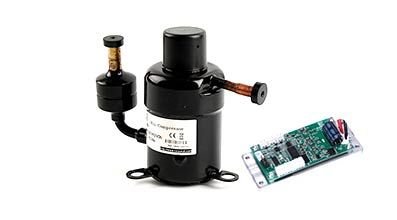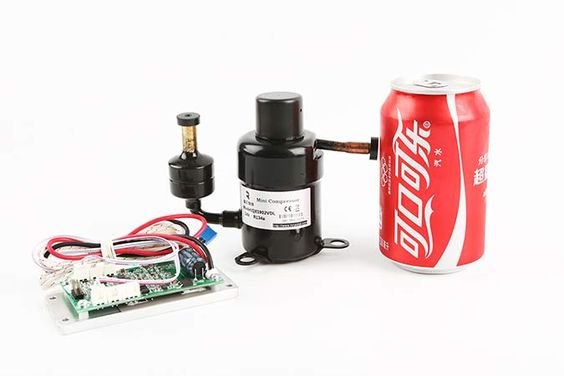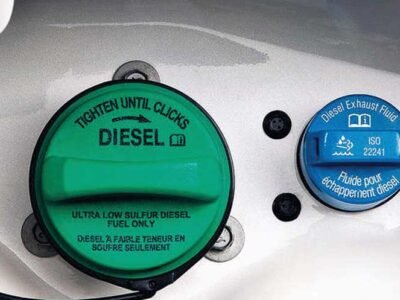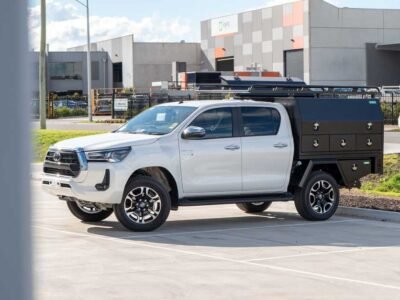What Is a Mini Compressor?

A mini compressor is designed and built for micro air conditioners and mini-fridges. It is lightweight, small, and efficient to meet different requirements of refrigeration compressors in the market today.
Typically, it has a cooling capacity between 30W and 550W and is well-suited for portable aircon, cooling electronics, mini refrigeration system, and applications of commercial appliances where space and weight are crucial.
Types of Mini Compressors
Since it is already used in various applications, a small AC compressor can run on 12 volts, 24 volts, and 48 volts powered through AC or DC power using an AC/DC conversion. Let’s take a look at these different types.
By Power
-
12-Volt Mini Compressor
The 12V mini compressor is the smallest refrigeration compressor and is the direct current (DC) voltage compressor for the refrigerant R134a. It is both suitable for air conditioners and mini-refrigerators. It is controlled by a driver board, which runs at various speeds ranging from 2,000 rpm to 6,000 rpm.
-
24-Volt Mini Compressor
The 24V mini compressor is a BLDC rotary compressor that uses a refrigerant R134a. It is run through a DC electrical energy. Its small size is ideal for air conditioning purposes and mobile and micro cooling systems. This compressor is controlled by a driver board that has different speeds, from 2,000 rpm to 6,000 rpm.
-
48-Volt Mini Compressor
Also considered a refrigeration compressor, the 48V mini compressor, is also run through a DC electrical energy. It is suitable for both small air conditioners and refrigerators. It can run on solar power, car power, battery, and even vehicle alternators. Furthermore, just like the other, compressors, it is controlled by a driver board that functions at different speeds, from 2,000 rpm to 6,000 rpm.
-
Small Compressor
A small compressor is an alternating current (AC) rotary compressor with a voltage bracket of 110V-120V/50-60Hz and 220V-240V/50-60Hz. This compressor is commonly used in air conditioning, dehumidifier, and freezer and refrigerator with refrigerants R134a and R410a.
By Structure
-
Scroll Compressor
A scroll compressor is made from two connected scrolls that pressurize or compress the refrigerant. One scroll is constant while the other one circles the fixed scroll. Tiny gaps are made when the scroll is moving, which is when the refrigerant gets pressurized.
-
Screw Compressor
A screw compressor is a type of circular or rotary compressor; however, it can only generate high pressure with a small amount of gas. It has a screw motor system with two connecting screws where the refrigerant is pressurized. This type of compressor is mainly used in industrial refrigeration purposes.
-
Reciprocating Compressor
A reciprocating compressor is the most used for commercial applications. It has a cylinder and piston, similar to the engine of a car. The reciprocation mechanism of the piston pressurizes the refrigerant found in the cylinder.
Common Features of a Mini Compressor
A mini compressor is not only lightweight and convenient. It has various amazing features and some of the most common are the following:

- Low noise and vibration
- High capacity and efficiency
- Has a capacity of 100W to 500W
- Suitable for transport and mobile applications
- Can run on 12V, 24V, and 48V DC powers
Common Applications of a Mini Compressor
A mini compressor is an ideal solution for a variety of applications. Some of these include:

- Automotive (helicopters, vessels, electric vehicles, etc.)
- Small and portable cooling applications
- Telecommunications cooling
- Medical and aesthetic devices
- Small refrigeration
- Truck parking coolers
- RV/EV refrigerators
- Electronic devices
- Household appliances
- Milk dispensers/coolers
- Yacht refrigerators
- Medical/vaccine transport
- Wine coolers
- Commercial freezers/refrigerators
- Ice storage chests/bins
- Beer dispensers
- Water dispensers
- Beverage cooling
- Mini portable air conditioning units
- Minibars
- Solar-powered refrigerators and air conditioners
- Slush/yogurt/smoothie machines
- Overlocking of computers
- Ice cream dispensers/cabinets
- And so much more!
Factors to Consider When Getting a Mini Compressor
If you are getting a compressor for a mini-fridge or for other applications, there are certain factors you need to consider first. Let’s check them out below.
-
Type of Refrigerant
Choosing the type of refrigerant involves ecological, availability, and performance aspects.
-
Cooling Capacity
Typically, this is described as the specific nominal capacity at regular working conditions of the unit in Watts (W), according to condensing and evaporating temperatures. You can determine the unit’s capacity through the refrigerant’s mass flow rate, which relies on the displacement of the compressor, volumetric efficiency, and RPM.
-
Electric Power Source
Many compressors are utilized in portable and mobile refrigeration systems. The DC power is generated through AC inverters, solar powers, vehicle alternators, fuel cells, and batteries. You must select a compressor basing on the available DC voltage.
-
Ambient Temperature
You must make sure that the compressor you choose is well-suited to function at the highest ambient temperature expected.
-
Cooling, Size, and Weight
When it comes to size, you may want to choose the smallest refrigeration unit that provides the highest performance. When it comes to weight, the ideal measurement is between 1.6 lbs. to 2.2 lbs. The latest mini compressor models generate 100W to 500W of cooling, utilizing a single-cylinder configuration.
How to Keep Your Condenser Working Optimally
Make it a habit to clean your freezer or refrigerator condenser coils on a regular basis. Remove debris and dust so the condenser can “breathe” better. Here is a step-by-step guide on how to clean the condenser properly.
- Unplug the refrigeration system.
- Look for the condenser coils, which are often found at the back or bottom of the unit or at the back of the grate.
- Remove the grill plate.
- Brush lightly the dust and debris from the fan and coils. If you want, you may also use a vacuum.
- Under the fridge, vacuum the surrounding areas and the floor.
- Clean the grill cover plate and then reattach.
- Plug in and turn on the unit.












